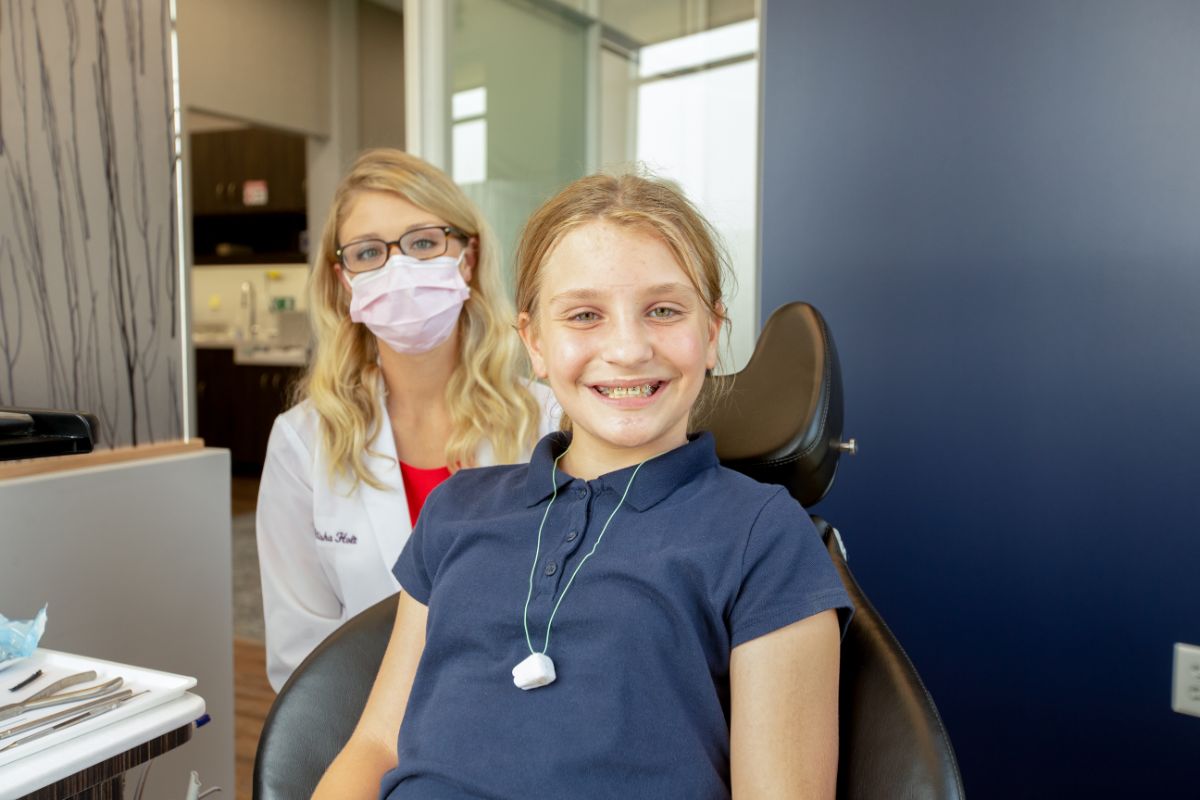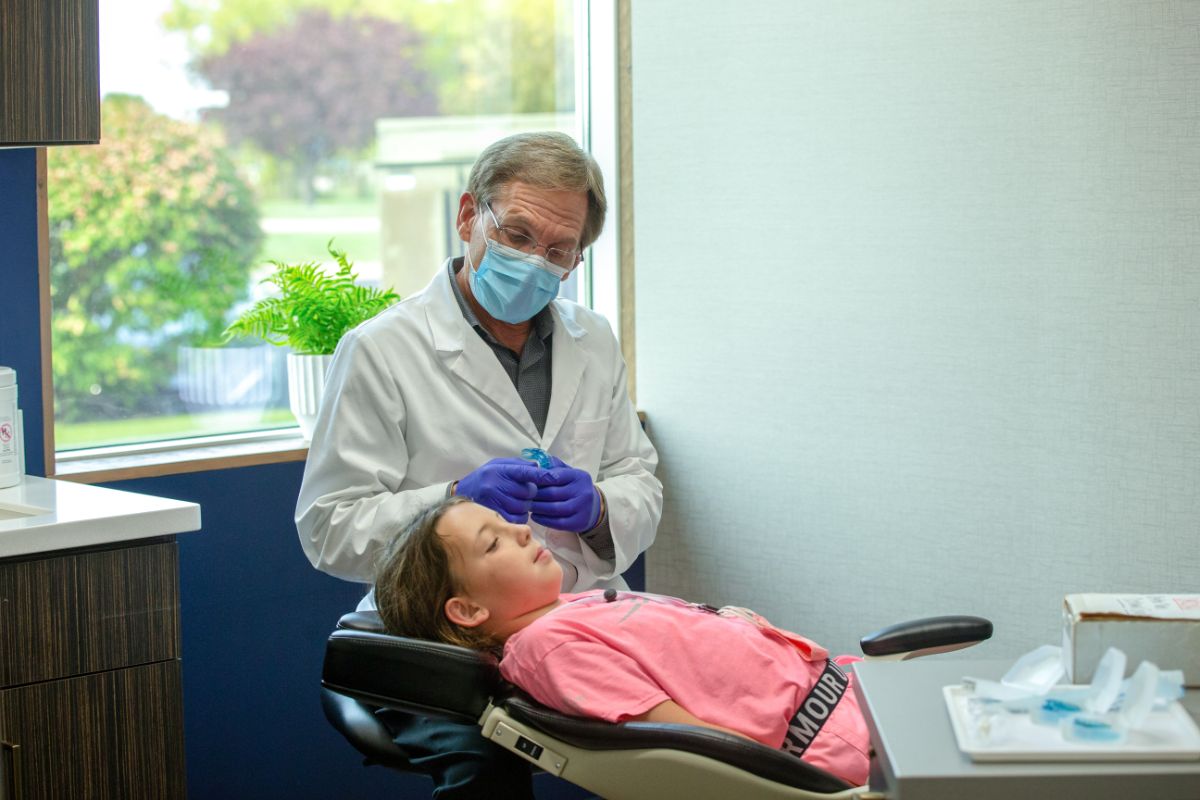Did you know that the number of orthodontic patients has more than doubled since 1982? Would it surprise you to learn that over 4 million Americans are currently wearing braces? There’s been an increase in patients of all ages looking to correct their orthodontic issues and improve their oral health, and one of the biggest reasons for this is the advances that have been made in both the technology and techniques we use. These days, there are more options than ever for straightening your smile. That’s why we’re taking a look at the different types of braces you can choose from!
Here at Kottemann Orthodontics, we offer children, teens, and adult patients a wide variety of affordable treatment options. Our experienced doctors are able to treat crowded teeth, underbites, and everything in between by utilizing several different treatment methods, including traditional braces. These orthodontic staples still have a proven track record for producing beautiful results, but they’re much smaller, efficient, and more attractive than previous braces were. Improvements like this mean we’re able to provide patients with a more rewarding and stress-free experience, from their first visit to the last.
If you’re unhappy with the way your teeth look or feel, there’s never been a better time to explore how braces can transform your smile. To learn more about how braces work, the different types we have available, and how they can give you a confident smile you love, keep reading below!
How do traditional braces work?
The basic design of braces has been around for over 100 years. We affix metal or clear brackets to the front surface of the teeth, then tie them together with wires and tiny rubber bands that are sometimes referred to as ligatures or elastics. Over time, these components work together to gently move the teeth into the desired positions. On average, this process can take anywhere from 12-24 months, but this depends on several factors, such as how complex the case is and how the patient responds to treatment.
Traditional braces can come with a bit learning curve, especially when it comes to keeping the teeth and gums clean. While it’s important for all of us to maintain a good oral hygiene routine, it’s essential for patients in braces since the spaces created by the brackets and wires can trap food particles and bacteria. While it can be difficult to brush and floss effectively around braces, there are several accessories that are designed to make this easier. For example, a waterpik can help rinse those hard to reach areas, while ortho picks can assist with successful flossing. We recommend that all our patients brush twice a day for at least two minutes each time. It’s also important to floss every night before bed to keep the teeth and gums healthy!
Follow-up visits are another important part of the treatment process, and patients in braces can expect to be seen every 6-8 weeks or so. During these appointments, one of our doctors will check that the teeth are moving in a healthy way. They’ll also change the bands attached to the brackets and may replace the wire as well. We know how busy families are these days and do our best to keep these appointments brief so patients can get back to school or work quickly.
Some foods will need to be avoided while wearing braces in order to protect them, including anything sticky or crunchy since these can damage the brackets and wires. This won’t last forever, though, and any frustration will be worth it once your braces come off and you see your beautiful new smile!
What types of braces are available at Kottemann Orthodontics?
Our practice offers both traditional metal and clear braces for a complete smile makeover.
Traditional metal braces
Traditional metal braces are one of our most efficient treatments, and typically made of a mix of high-grade stainless steel, nickel, and other metals. These braces consist of bands that wrap around the back molars, with smaller metal brackets cemented to the front surfaces of the other teeth. The archwire is made of thin, springy metal, and runs through the brackets. It’s fixed to the brackets by flexible elastics, metal ties, or another type of clasp. These components apply gentle pressure that moves the teeth into more optimal positions over time.
Innovations in the design of modern braces mean they’re much more comfortable than previous versions were as well as being reliable, effective, and economical. The total treatment time also tends to be shorter than it used to be, so you can get the best results in the least amount of time.
Clear braces
These function in much the same way traditional braces but have the added benefit of clear, white, or tooth-colored brackets. When paired with elastics that are also clear, white, or tooth-colored, they can be an incredibly subtle treatment option for image-conscious patients. They are a bit more delicate than metal braces, so we generally only recommend them for older teens and adults.
Find your best smile with braces from Kottemann Orthodontics
Every smile is beautifully unique, and what works for one patient may not be a good choice for another. That’s why we take every patient’s specific needs, goals, and lifestyle into account when creating a customized treatment plan for them. When you choose our practice, you’re putting your smile into the very best hands!
With four experienced doctors and five conveniently located offices, Kottemann Orthodontics is the perfect choice for handling all your orthodontic needs. If you’d like to learn more about how braces can give you a confident smile you love, get in touch today! We’d love to schedule you for a FREE consultation.


